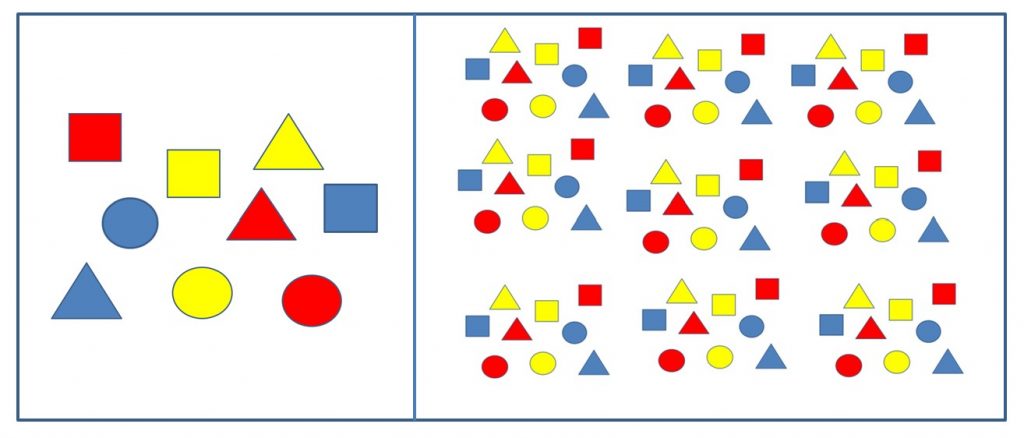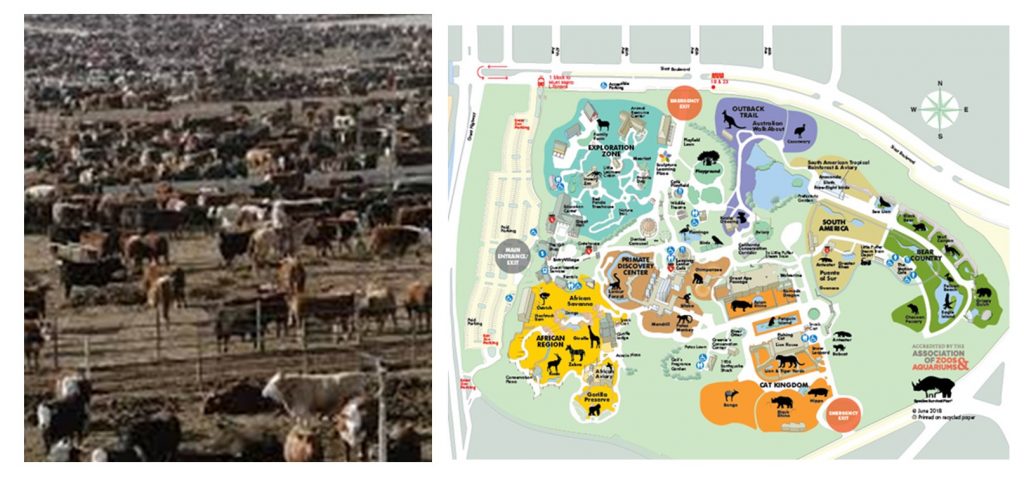42 Collection Scope And Scale
You know from your own experience that some collections of resources are more difficult to organize than others. This chapter introduces two new concepts, SCOPE and SCALE, that explain these difficulties. You can use these concepts to analyze organizing tasks so you can better estimate how much time it will take to do them. And if you are clever, you can make an organizing task easier using these ideas!
- SCOPE is the variety of resources you need to organize.
- SCALE is the number of resources you need to organize.


You can answer this question about the ratio of animals to employees using the concepts of scope and scale. The Harris Cattle Ranch has a very small scope because it only has one type of animal. The scale is very large, but because all the animals are treated as equivalent (remember the “Santa” question), a single employee can manage the required interactions with a lot of animals. No one is ever going to search for a specific cow in a herd that has 100,000 of them.
In contrast, the zoo has a much smaller scale in terms of the overall number of animals, but because there are so many different species, employees need to specialize. Just think how different penguins, monkeys, and elephants are in their habitats, diets, and medical treatments! Furthermore, some of the animals have been in the zoo for many years and are treated as “celebrity animals” and identified by name. You can buy a stuffed animal version of the celebrity animal in the zoo gift shop to take home.
But you have to remember the fundamental secret of organizing…. that WHY you organize and HOW you organize are interconnected decisions. At the Harris Cattle Ranch, the ratio of cattle to employees can be very big because the WHY is simple — the cattle just need to be fed so they grow, so they can be kept in big feedlots and not organized too much.
Make sure you understand what makes the Harris Cattle Ranch easy to organize. It isn’t because cattle are always easy to organize. You can imagine a “farm petting zoo” with just a few cattle there, but they might be treated as individual cows with names and separate areas for interacting with kids. The complexity of the organizing system depends on whether you treat all the cattle as the same type of thing or as individuals.
In the next chapter you will do some activities that will ensure that you understand these concepts of SCOPE and SCALE.

